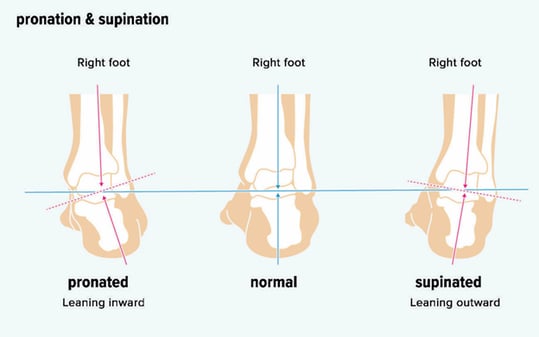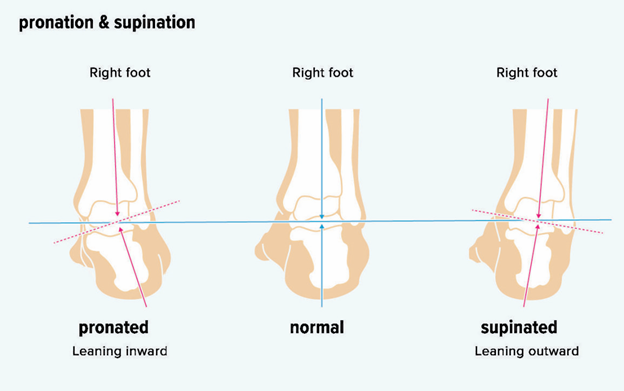What is Plantar Fasciitis?
These are all things we hear as personal trainers at O2 Fitness. Do you think you might have plantar fasciitis? Are you worried it will keep you from exercising? Are you concerned it will keep you from achieving your fitness goals? Do not fret, fitness family! At O2 Fitness we can get you to your goal and work around your pain. Spoiler alert! We might even help you get rid of that foot pain!
Plantar Fasciitis is a condition that occurs when the tissue that connects the muscles of your feet is inflamed. This inflammation can occur due to obesity, lack of ankle mobility (specifically dorsiflexion), foot pronation, or increased athletic type stress to the foot region. The pain receptors in your feet are letting you know, “Hey! You have a flat tire here!” Let’s look at each potential cause of inflammation and some potential fixes for each.
Terminology
Dorsiflexion - moving the toes towards the nose via the ankle. We can test this by using a very simple wall test. Check out our Facebook Live, “Fix your feet” for more information.
Foot pronation - think “flat feet.” It can happen for different reasons in different people. You can test how flat your feet are using water and a piece of paper. Put your feet in water and then stand on a piece of paper. Look at the paper. Does your foot have a thin line that connects the heel to the toes and toe pad? Do your feet have a very thick line that connects those two points? The thicker indicates foot pronation. The thinner line indicates the presence of an arch and a decrease in foot pronation.
Now that we got your anatomy lesson out of the way. Let’s talk about fixing this “flat tire!”
How to fix your flat feet!
I like this analogy for plantar fasciitis because foot pronation can happen due to collapsed arches or flat feet as we just discussed. This collapsed arch forces the ankle to fall inward toward the bodies’ midline.

This misalignment also limits the mobility of the ankle. When this misalignment of the joint occurs, it pulls on the foot's muscles and fascia in a way that causes pain and discomfort. Think of fascia like the “saran wrap” of the muscles. It is a thin layer of tissue that wraps around each muscle and connects it to other muscles. This fascia helps tie everything together and helps support movement.
The pain you feel when this fascia is too tight is your body letting you know that something is not right. Most people can get away with some slight degrees of misalignment. We all have compensation patterns. Most of us are not perfectly symmetrical and we don’t walk around in pain all the time. However, when the body starts sending severe pain signals it is time to pay attention. Things have gone too far! I know this because I have suffered from back pain, knee injuries, and then finally plantar fasciitis.
When I look back at pictures’ I can see my foot pronation on the right side clearly. I always wonder what would have happened if I would have addressed this first. According to some very popular physical therapists and foot specialists it probably would have reduced, if not eliminated the low back issues and likely the meniscus tear too. When the ankle collapses inward like in the pictures above, the rest of the chain follows. The chain I am referring to is the kinetic chain. This just means the system of muscles, ligaments, tendons, and joints that are tied together. In this specific case we are talking about the foot, ankle, knee, hips, lower spine, and all the muscles, ligaments, and tendons in between. This kinetic chain is closely linked together. To fix this flat foot and help the rest of the body, we should implement a corrective exercise strategy that will help to realign the ankle joint and create stability in the foot while simultaneously creating better mobility in the ankle. The 4 steps to corrective exercise strategy after an assessment are:
- Foam roll or SMR (Self-Myofascial Release)
- Lengthen or Stretch
- Activate (“wake up” the weakened and overstretched muscles)
- Integrate (train the body to use these weak muscles with the already strong muscles appropriately)
Other Resources
To help you out, we have compiled a list of videos that will help you work through the strategy above specific to plantar fasciitis. If you have questions you can speak with one of our personal trainers.
Plantar Fasciitis Corrective Exercise Program
This is an example of a program a personal trainer would use with a client before a training session or on off days.These programs used consistently have been shown to reduce pain, increase mobility, and allow our members and clients to have more consistent journeys towards their goals.We are not diagnosing plantar fasciitis. That is the job of a physical therapist. These corrective exercise strategies are to be used if you think you might be experiencing the onset of something like plantar fasciitis. Remember, if you have excruciating pain, please see a professional before trying these routines.












.jpeg)
.jpg)
.jpg)